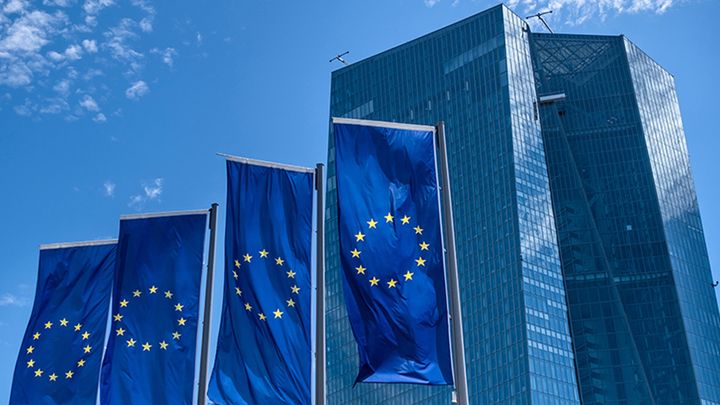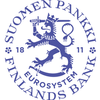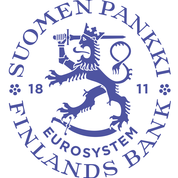European Central Bank renews its monetary policy strategy

On 7 July 2021, the Governing Council of the European Central Bank (ECB) completed the monetary policy strategy review. The strategy describes how the ECB will maintain price stability in the euro area and what objectives it sets for its monetary policy. ‘A stable and predictable outlook for prices and hence public confidence in the preservation of purchasing power are key prerequisites for sustainable economic growth and full employment.To a large extent, balanced economic growth, full employment and price stability are mutually consistent objectives,’ says Bank of Finland Governor Olli Rehn.
According to the new strategy, price stability is best maintained by aiming for a 2% inflation target over the medium term. This target is symmetric, meaning the Governing Council considers negative and positive deviations of inflation from the target as equally undesirable. The 2% inflation target provides a clear anchor for inflation expectations, which is essential for maintaining price stability. ‘The new inflation target is clearly symmetric and unambiguous,’ stresses Governor Rehn.
The economic environment has undergone profound structural changes since the ECB’s previous strategy review in 2003. Long-term structural trends, in particular slower productivity growth and the ageing of the population, have slowed the pace of growth in the economy and driven down equilibrium real interest rates. Due to the proximity of the zero lower bound, this has reduced the scope for the ECB and other central banks to achieve their objectives by exclusively relying on traditional instruments, primarily changes in policy interest rates. Forward guidance, asset purchases and longer-term refinancing operations have helped to partially overcome the constraints induced by the lower bound and will continue to be used as appropriate.
To maintain the symmetry of its inflation target, the Governing Council recognises the importance of taking into account the implications of the effective lower bound. ‘When the economy is close to the lower bound, this requires especially forceful or persistent monetary policy measures to avoid negative deviations from the inflation target becoming entrenched. This may also imply a transitory period in which inflation is moderately above target,’explains Governor Rehn.
Without prejudice to the price stability objective, the Governing Council will in the medium term take into account factors relating to e.g. full employment and financial stability. ‘The setting of a medium-term inflation target will also allow other important objectives, such as full employment, to be emphasised in decision-making, naturally without prejudice price stability,’ says Governor Rehn.
Climate change will impact structural and cyclical developments in the economy and the financial system. ‘The Governing Council stresses that it is committed to systematically take factors relating to environmental sustainability into account in its monetary policy,’ states Governor Rehn.
The new strategy is based on extensive expertise and research as well as on dialogue with the peoples of Europe. The Bank of Finland’s research has played a key role in assessing the success of the current inflation target. The ECB and the national central banks have listened to their citizens’ views on inflation, employment and sustainable economic growth. ‘The dialogue does not end here. We must be able to understandably communicate our decisions, which will have an impact on almost all financial decisions people will make,’ says Governor Rehn.
The update of the monetary policy strategy was launched at the beginning of 2020. The previous strategy was introduced in 1998 and further defined in 2003. In future, the Governing Council will assess its strategy regularly. The next assessment is scheduled for 2025.
For more information, please contact Jenni Hellström, tel. +358 (0)9 183 2632.
Keywords
Images
Links
About Suomen Pankki
The Bank of Finland is the national monetary authority and central bank of Finland. At the same time, it is also a part of the Eurosystem, which is responsible for monetary policy and other central bank tasks in the euro area and administers use of the world’s second largest currency – the euro.
Subscribe to releases from Suomen Pankki
Subscribe to all the latest releases from Suomen Pankki by registering your e-mail address below. You can unsubscribe at any time.
Latest releases from Suomen Pankki
Det är inte läge att skjuta upp lösningarna för Finlands offentliga finanser19.12.2025 11:00:00 EET | Pressmeddelande
Finlands offentliga finanser befinner sig alltjämt långt från balans. För att vända skuldsättningsutvecklingen krävs en betydande konsolidering av de offentliga finanserna och investeringar i tillväxt. Höjningen av de nödvändiga försvarsutgifterna försvårar den offentligfinansiella konsolideringen. Inflationen i euroområdet ligger på målet och ekonomin har vuxit något snabbare än förutsett.
Suomen julkisen talouden ratkaisuja ei kannata lykätä19.12.2025 11:00:00 EET | Tiedote
Suomen julkinen talous on edelleen kaukana tasapainosta. Velkaantumiskehityksen kääntäminen vaatii merkittävää julkisen talouden sopeuttamista ja investointeja kasvuun. Välttämättömien puolustusmenojen kasvattaminen vaikeuttaa tasapainottamista. Euroalueella inflaatio on tavoitteessa ja talous on kasvanut hieman ennustettua paremmin.
Finland’s decisions on public finances should not be postponed19.12.2025 11:00:00 EET | Press release
Finland’s public finances are still far from being in balance. Reversing the rise in public debt will require considerable fiscal consolidation and investments in growth. An expansion of essential defence spending will hamper the fiscal adjustment process. Inflation in the euro area is at target, and growth in the euro area economy has been slightly higher than forecast.
Återhämtningen i Finlands ekonomi går sakta framåt19.12.2025 11:00:00 EET | Pressmeddelande
Finlands ekonomi lämnar snart perioden med svag tillväxt bakom sig, men ingen kraftig tillväxt väntas under åren framöver. Inflationen är fortsatt måttfull och sysselsättningen stiger gradvis. Den stramare handelspolitiken och globala politiska osäkerheter samt eventuella åtgärder för konsolidering av de offentliga finanserna kastar en skugga över tillväxtutsikterna för ekonomin i Finland. De offentliga finanserna uppvisar alltjämt ett djupt underskott.
Suomen talouden elpyminen etenee maltillisesti19.12.2025 11:00:00 EET | Tiedote
Suomen talouden hitaan kasvun jakso on jäämässä taakse, mutta voimakasta kasvua ei lähivuosina ole odotettavissa. Inflaatio pysyy maltillisena ja työllisyys kohenee vähitellen. Talouden kasvunäkymiä varjostavat kauppapolitiikan kiristyminen ja kansainvälisen politiikan epävarmuudet sekä mahdolliset julkisen talouden sopeutustoimet. Julkinen talous säilyy syvästi alijäämäisenä.
In our pressroom you can read all our latest releases, find our press contacts, images, documents and other relevant information about us.
Visit our pressroom

